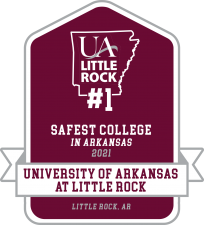An Active Shooter Incident is defined as: One or more persons who participate in a random or systematic shooting spree demonstrating their intent to continuously harm or kill others. These situations are dynamic and evolve rapidly, demanding immediate deployment of law enforcement resources to stop the shooting and limit harm or loss of life to innocent victims.
Immediate Action
- Lock the immediate area.
- Barricade the door using whatever is available.
- After locking the door, sit on the floor below window level, against a wall not visible through any door or window glass if possible.
- Allow others to seek refuge with you if it is safe to do so.
Protective Actions
- Close blinds.
- Block windows.
- Turn off radios and computer monitors.
- Silence cell phones.
- Consider placing signs in interior doors and windows to indicate the location of injured persons; keep in mind the assailant may see them as well.
- Place a sign in an exterior window if available to mark your location and the location of injured persons for first responders.
- Attempt to keep others calm and quiet.
- Once the room is locked, try to position yourself and others out of sight and behind any available object that may offer additional protection.
Unlocked Areas
- If you find yourself in an open area, immediately seek protection.
- Put something between you and the assailant.
- Consider trying to escape if you know where the assailant is and there appears to be an escape route available.
- If in doubt, find the safest area available and lock or barricade it as best you can.
- Call 911 or 501-916-3400 and be prepared to tell the dispatcher as much information as you can, such as:
- What is happening
- Your location, including building name and room number
- Injuries, if any, including the number of injured and the type of injuries
- Your name and any other information requested
- Tip: Try to provide information in a calm clear manner so that the dispatcher can relay your information to responding law enforcement and emergency personnel.
What to Report
Try to include as much information about the assailant as you can, such as:
- Specific location and direction of the assailant
- Number of assailants
- Gender, age and race
- Language or commands used by the assailant
- Clothing color and type
- Physical features, such as height, weight, facial hair, glasses, tattoos, etc.
- Type of weapons (handgun, rifle, shotgun, explosives)
- Description of any backpack or bag
- Whether you recognize the assailant or know his/her name
- What you heard, such as gunshots, explosions
Assist the injured using basic first aid. Emergency medical personnel will not be able to respond until law enforcement has locked the area. You may have to help the injured as best you can until the area is locked.
Un-securing the Area
The assailant may not stop until his/her objectives have been met or until engaged and stopped by law enforcement.
- Always consider the risk exposure of opening the door for any reason.
- Attempts to rescue other people should only be made if it can be done without further endangering the people inside a locked area.
- Be aware that the assailant may bang on the door, yell for help, or otherwise attempt to entice you to open the door of a locked area.
- If there is any doubt about the safety of the individuals inside the room, the area must remain locked.
Law Enforcement Response
The UA Little Rock Police Department, Little Rock Police Department, and other law enforcement agencies will respond to an active shooter event on the UA Little Rock campus. It is important that you remember:
- Remain inside the locked area.
- Law enforcement will locate, contain and stop the assailant.
- The safest place for you to be is inside a locked room.
- The assailant may not flee when law enforcement enters the building, but instead may target arriving officers.
- Initial responding officers will not treat the injured or begin evacuation until the threat is stopped and the area is locked.
- You may need to explain this to others to keep them calm. It is important that the responding officers are not confronted or distracted while they are looking for the assailant.
- Once the threat is neutralized, officers will begin treatment and evacuation.
Evacuation
Officers will establish safe corridors for evacuation. Follow their instructions.
- This may be time consuming.
- Stay in locked areas until instructed otherwise.
- You may be instructed to keep your hands on your head.
- You may be searched.
- You may escorted out of the building by law enforcement personnel.
- After evacuation you may be taken to a staging or holding area for medical care, interviewing, counseling, etc.
- Once you have been evacuated you will not be permitted to retrieve items or access the area until law enforcement releases the crime scene.
